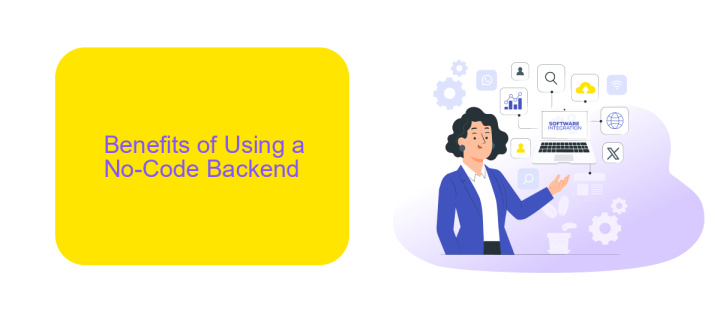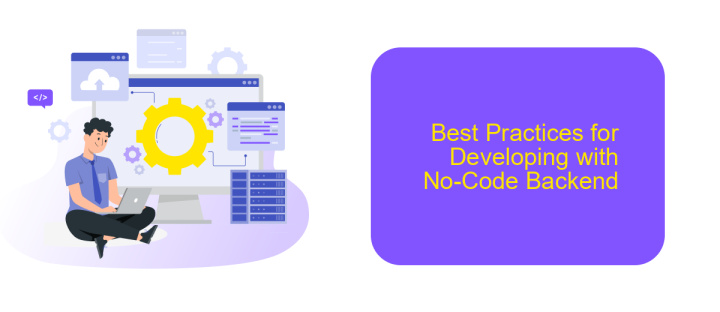No-Code Backend
In today's fast-paced digital world, the demand for efficient and scalable backend solutions has never been higher. No-code backend platforms are revolutionizing the way developers and businesses build and manage applications. By eliminating the need for complex coding, these platforms empower users to create robust backend systems quickly and cost-effectively, making technology more accessible to everyone.
Introduction to No-Code Backend
No-code backend platforms have revolutionized the way developers and non-developers build and manage applications. These platforms empower users to create robust backend systems without writing a single line of code, making software development more accessible and efficient. By leveraging visual interfaces and pre-built modules, users can quickly set up databases, authentication, and other essential backend functionalities.
- Ease of Use: Intuitive drag-and-drop interfaces.
- Cost-Effective: Reduces the need for specialized backend developers.
- Scalability: Easily scale applications as needed.
- Integration: Seamlessly connect with external services like ApiX-Drive for automated workflows.
One of the key advantages of no-code backend platforms is their ability to integrate with various third-party services. For instance, ApiX-Drive allows users to automate data transfers between different applications, enhancing productivity and reducing manual effort. With these tools, businesses can focus more on their core activities, leaving the technical complexities to the no-code solutions.
Benefits of Using a No-Code Backend

No-Code Backend solutions offer numerous benefits, starting with significantly reduced development time. Traditional backend development can be time-consuming and requires specialized skills, whereas No-Code platforms enable users to build and deploy backend systems rapidly. This accelerates the entire development process, allowing businesses to bring products to market faster and adapt to changing needs more efficiently.
Another major advantage is cost-effectiveness. No-Code Backends eliminate the need for hiring specialized backend developers, reducing labor costs. Additionally, these platforms often come with built-in integrations and tools that simplify complex tasks. For example, services like ApiX-Drive allow seamless integration with various applications, enabling businesses to automate workflows without writing a single line of code. This not only saves money but also reduces the risk of errors, ensuring more reliable and scalable solutions.
Challenges and Limitations of No-Code Backend

No-code backend platforms offer numerous advantages, but they also come with their own set of challenges and limitations. Understanding these drawbacks is crucial for making informed decisions.
1. Limited Customization: No-code solutions often provide limited customization options, which can be restrictive for complex or unique business needs.
2. Scalability Issues: As your business grows, the no-code platform may struggle to scale efficiently, potentially leading to performance issues.
3. Integration Constraints: Integrating with other systems can be challenging. For instance, while services like ApiX-Drive facilitate integrations, they may not cover all specific requirements.
4. Vendor Lock-in: Relying heavily on a no-code platform can lead to vendor lock-in, making it difficult to switch providers without significant effort.
5. Security Concerns: No-code platforms may not offer the same level of security and compliance features as custom-built solutions.
Despite these challenges, no-code backend platforms remain a valuable tool for rapid development and prototyping. Businesses should weigh these limitations against their specific needs to determine the best approach for their projects.
Best Practices for Developing with No-Code Backend

When developing with a no-code backend, it's essential to follow best practices to ensure your application is efficient, scalable, and maintainable. Start by clearly defining your project requirements and goals. This will help you choose the right no-code platform and tools that align with your needs.
Next, focus on designing a user-friendly interface. A well-thought-out design will make it easier for users to navigate and interact with your application. Utilize templates and pre-built components to speed up the development process without compromising on quality.
- Regularly test your application to identify and fix any issues early.
- Document your workflows and processes for easier future maintenance.
- Leverage integration tools like ApiX-Drive to connect various services seamlessly.
- Keep your data secure by implementing proper authentication and authorization mechanisms.
Finally, stay updated with the latest trends and features in the no-code ecosystem. Continuous learning will help you make the most of the tools at your disposal and keep your application competitive. By following these best practices, you can develop robust and efficient applications with minimal coding effort.
- Automate the work of an online store or landing
- Empower through integration
- Don't spend money on programmers and integrators
- Save time by automating routine tasks
Case Studies and Examples of No-Code Backend Implementation
One notable case study of no-code backend implementation is the rapid development of a customer relationship management (CRM) system for a small business. Using no-code platforms, the company was able to design and deploy a fully functional CRM without extensive coding knowledge. This system allowed the business to manage customer interactions, track sales, and automate routine tasks, significantly improving operational efficiency. The integration with third-party services like ApiX-Drive facilitated seamless data synchronization between the CRM and other business tools, enabling real-time updates and reducing manual data entry.
Another example is a startup that needed a robust backend to support its mobile application. Leveraging no-code solutions, the team built a scalable backend infrastructure capable of handling user authentication, data storage, and API integrations. The use of ApiX-Drive further enhanced the backend by allowing the startup to easily connect with various external services, such as payment gateways and marketing platforms. This approach not only accelerated the development process but also reduced costs, allowing the startup to focus on refining its core product features.
FAQ
What is No-Code Backend?
How does No-Code Backend compare to traditional backend development?
Can No-Code Backend solutions handle complex integrations?
Are No-Code Backend solutions secure?
Who can benefit from using No-Code Backend platforms?
Apix-Drive is a universal tool that will quickly streamline any workflow, freeing you from routine and possible financial losses. Try ApiX-Drive in action and see how useful it is for you personally. In the meantime, when you are setting up connections between systems, think about where you are investing your free time, because now you will have much more of it.


